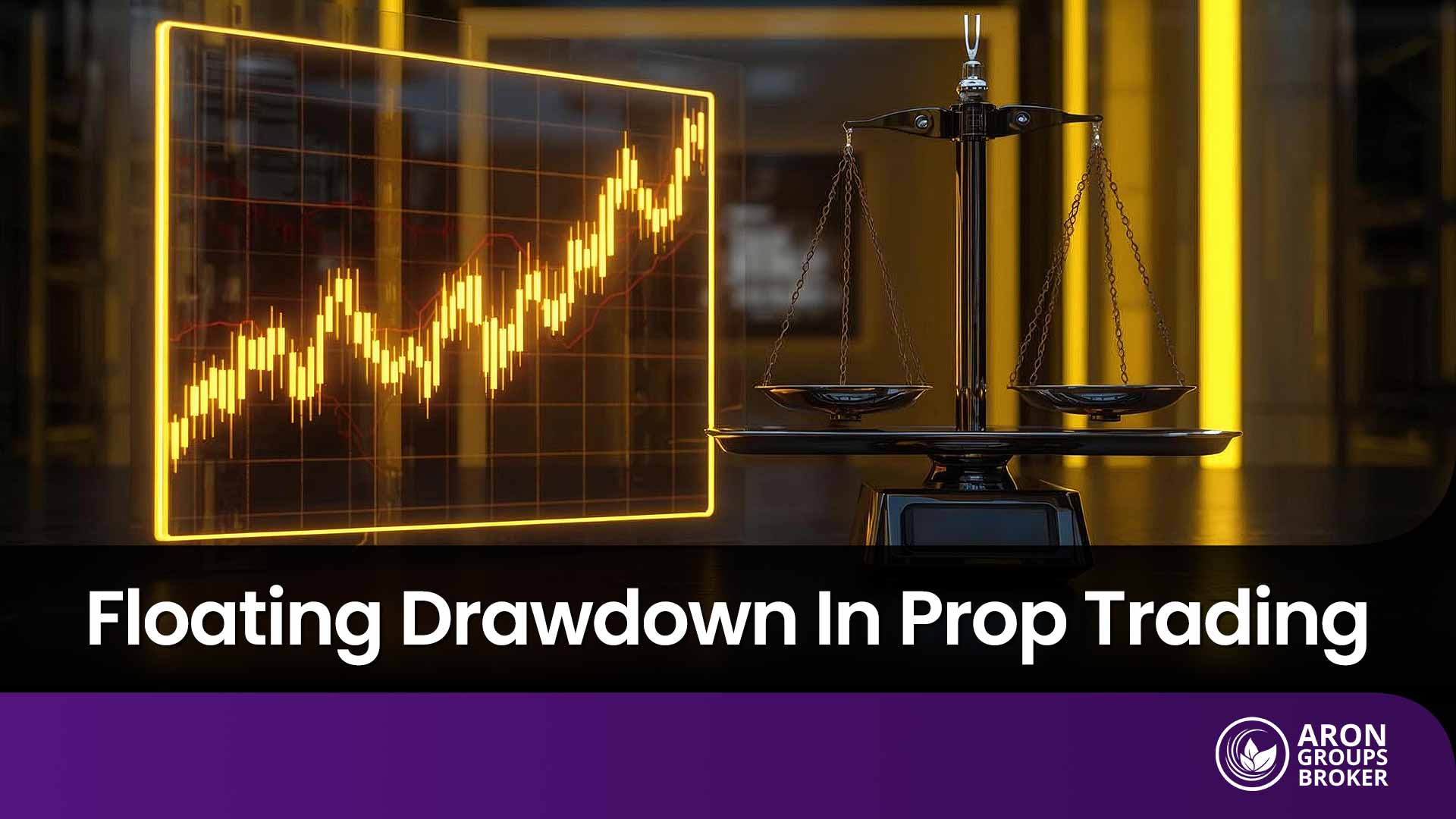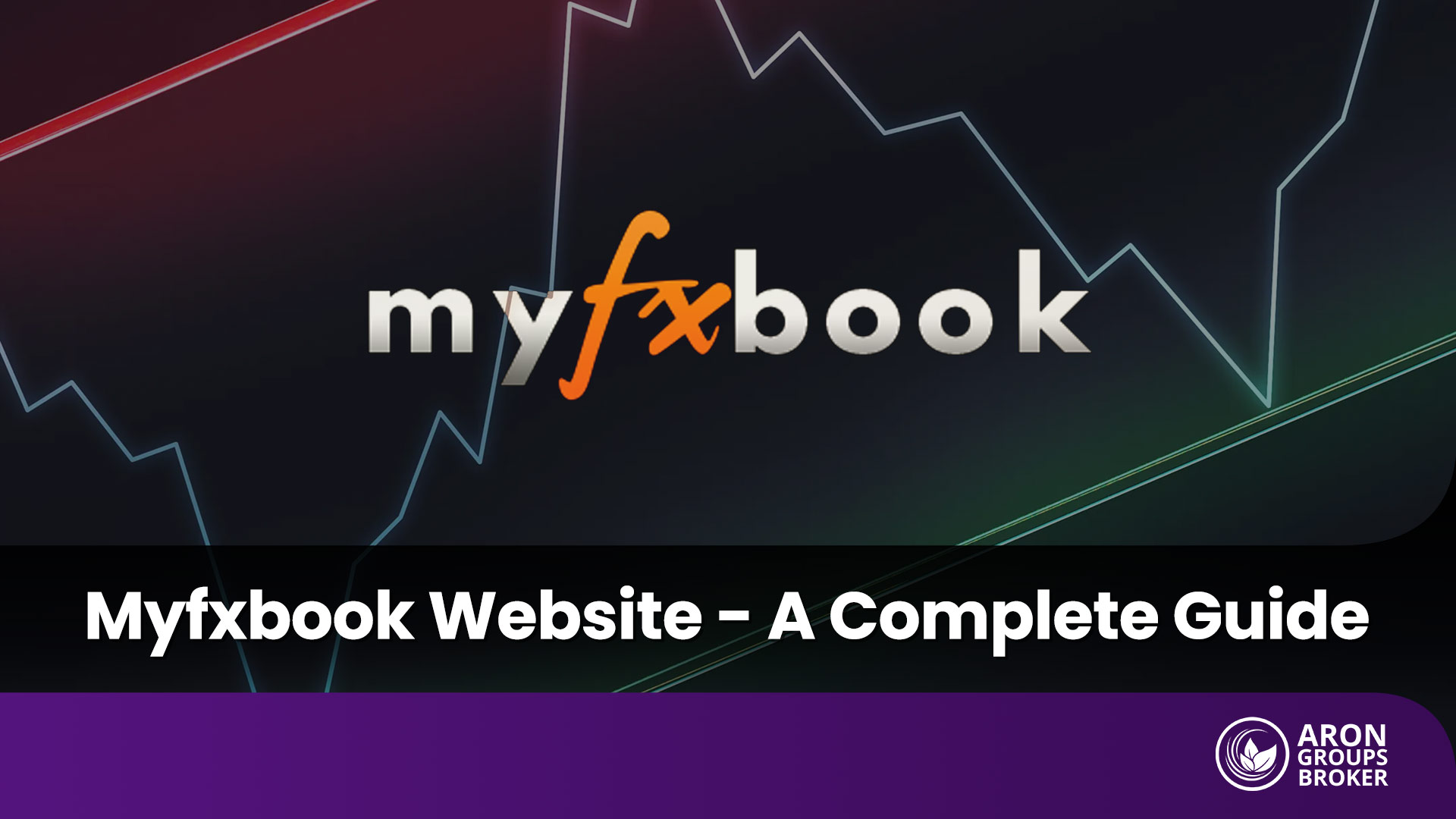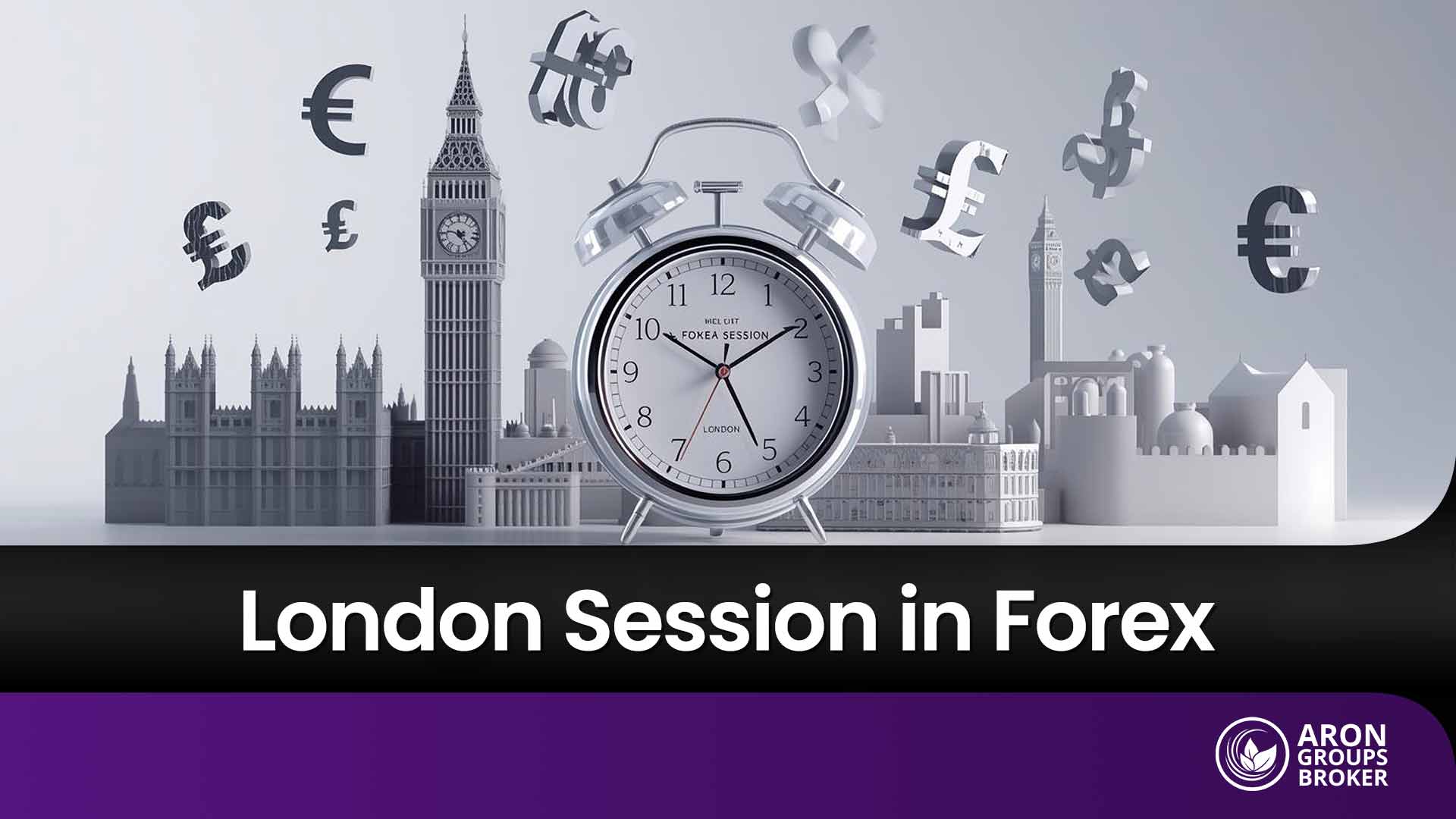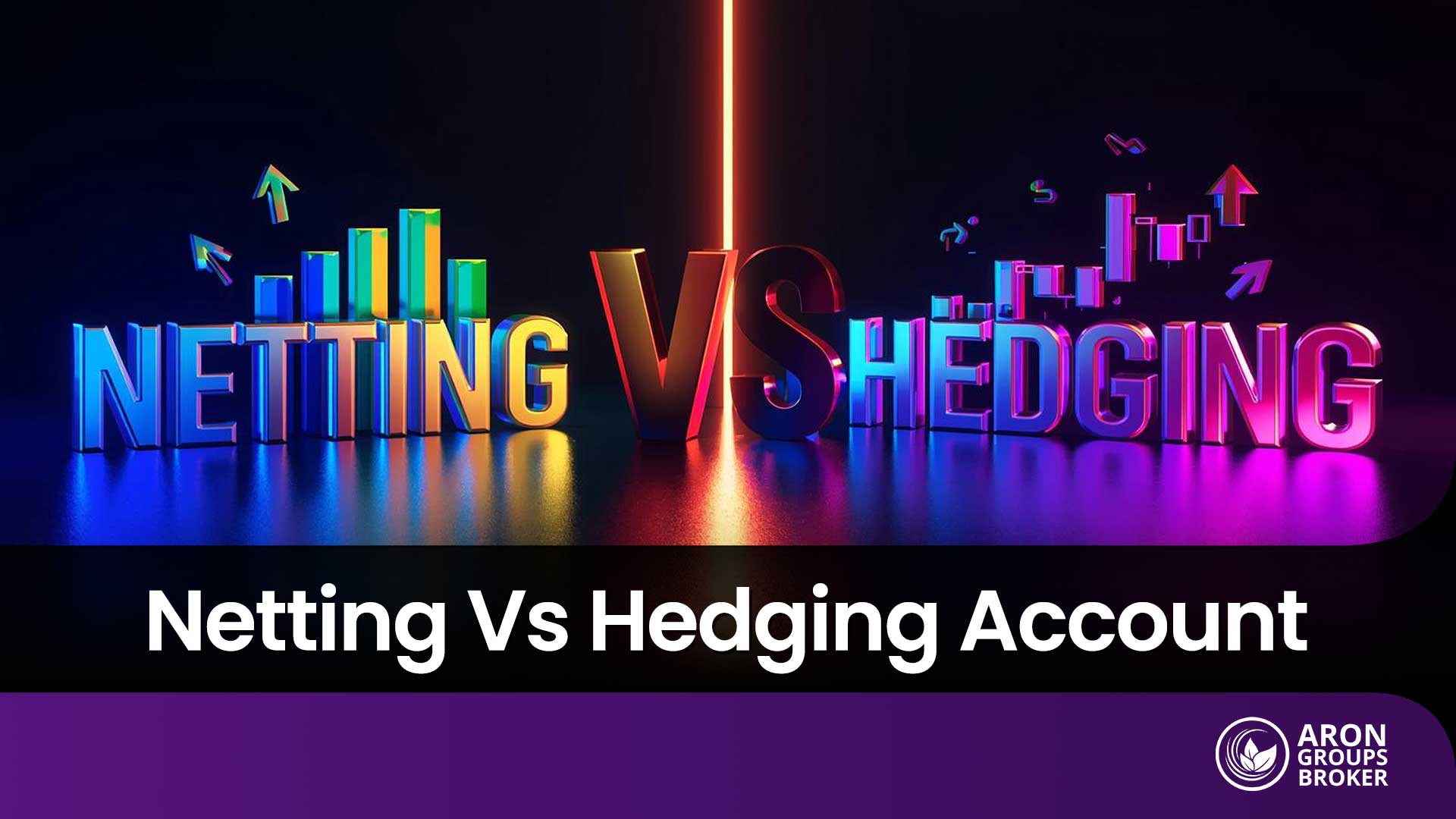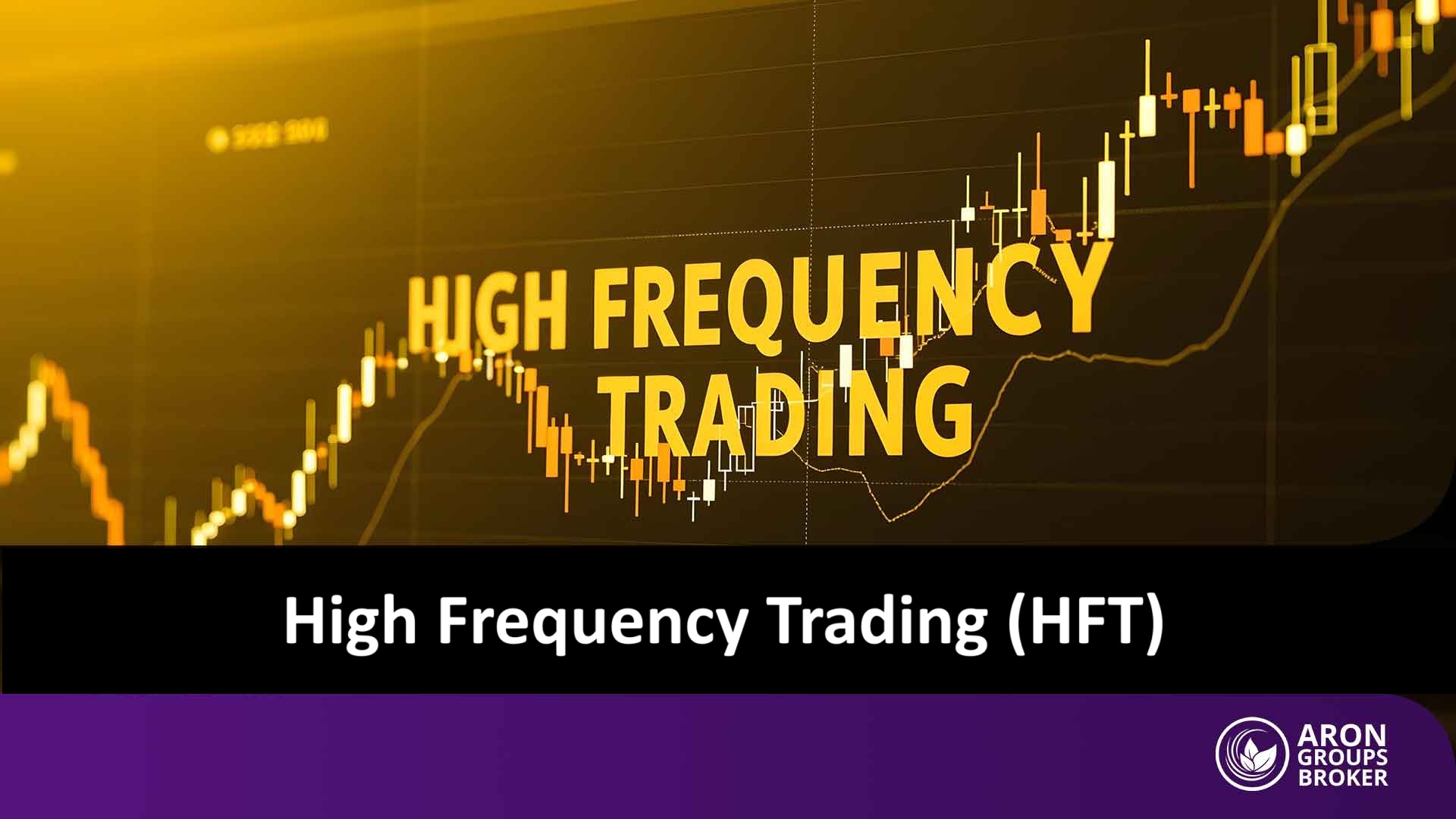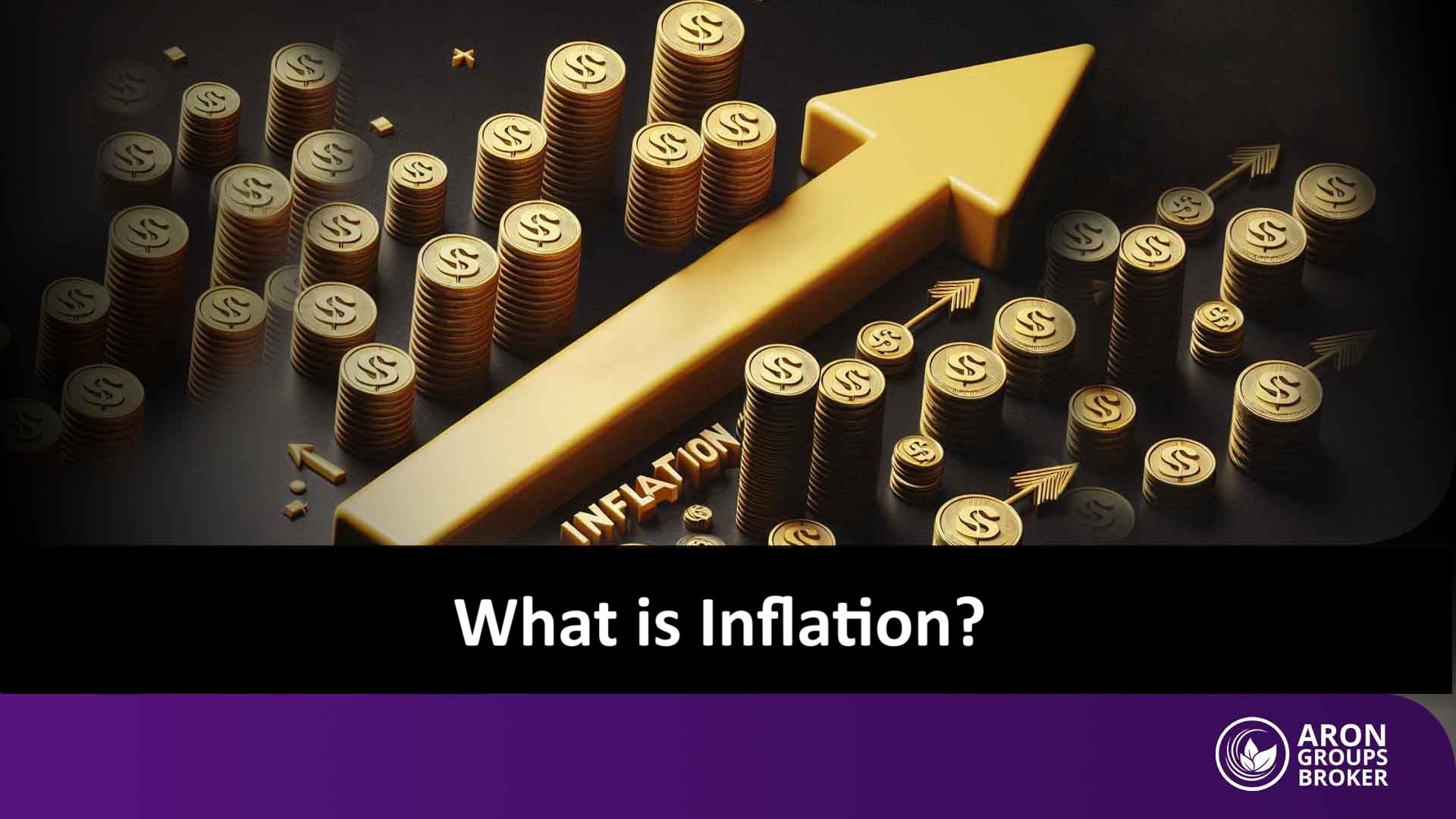You have probably asked yourself what Floating Risk is and why it plays such a crucial role when working with prop trading firms. Many traders realize, once they start live trading, that the profit or loss visible in their account is not final, and market conditions can change it at any moment. This very concept, known as Floating Risk in prop trading, often becomes a decisive factor in whether traders succeed or fail. If you would like to understand the role of this risk in trading and learn how to manage it effectively, we invite you to read on until the end of this article.

- Floating Risk refers to unrealized profit or loss in open positions that can change at any moment due to market fluctuations.
- Prop trading firms set strict limits to prevent excessive exposure to this risk and to protect their core capital.
- Proper management of Floating Risk involves tools such as trailing stop-losses, adjusting position sizes, and adhering to defined drawdown levels.
- Iranian traders, due to payment restrictions and sanctions, must be especially cautious about the rules of foreign prop firms and adopt more conservative trading strategies.
What is Floating Risk?
You have probably wondered what Floating Risk actually means and why traders pay so much attention to it. Floating Risk refers to unrealized profit or loss that arises from open positions and remains uncertain until the trade is closed. This type of risk exists because asset prices fluctuate constantly, and at any given moment it can impact the equity of a trading account.
For example, suppose you purchase a stock at $100. If its price drops to $95, you are facing a $5 loss. However, this loss is not yet final and continues to be considered Floating Risk in your account. The price may rise again, reducing the loss or even turning the trade profitable, or it may fall further, increasing the unrealized loss.
The key point is that Floating Risk directly affects the real-time value of your account, even if your account balance itself has not changed. This situation can influence your ability to open new positions or comply with the rules set by prop trading firms. For this reason, understanding this concept and recognizing its implications is essential for any trader, whether trading personal capital or operating under a prop trading program.
In this context, using structured tools and scientific methods of risk management plays a crucial role in controlling potential losses and increasing the likelihood of long-term trading success.

According to FeneFX, prop trading firms often apply the Floating Risk Rule, which dynamically adjusts the trader’s allowable Floating Risk based on account status and market volatility. In practice, when unrealized profit or loss increases significantly, the permitted risk level may be reduced.
What Does Floating Risk Mean in Prop Trading?
When a trader operates with a company’s capital, every open position can carry temporary profit or loss that has not yet been realized. This situation is referred to as Floating Risk in prop trading. For the firm, this risk is highly significant because it reflects how vulnerable the company’s capital is to market fluctuations and serves as a key factor in evaluating trader performance.
Floating Risk and Its Role in Prop Firm Rules and Limitations
Prop trading firms that allocate their capital to traders enforce strict rules to protect their resources. Part of these rules, commonly known as prop firm rules, often include specific limits on the amount of Floating Risk allowed. For example, a firm may permit unrealized losses only up to two or three percent of the account balance. If Floating Risk exceeds this threshold, the account may be suspended or terminated. These rules ensure that traders do not put the company’s core capital at undue risk by neglecting proper risk controls.
The Role of Floating Risk in Capital Management and Trading Strategies
Professional traders understand that long-term success is impossible without accounting for Floating Risk. They design their strategies to minimize potential losses and preserve trading capital. Misusing leverage can amplify this risk substantially, while selecting appropriate position sizes and setting rational stop-loss levels help to keep it under control. Paying attention to these factors is a crucial part of risk management and often determines the difference between a consistently profitable trader and one prone to failure.
Practical Example of Floating Risk Impact in Prop Trading
Consider a trader operating a prop account with $10,000 in capital. Suppose the trader opens a position requiring high margin. The firm has set a rule that unrealized losses, or Floating Risk, must not exceed two percent of the account, which equals $200. If the market moves against the position and this limit is breached, the account could be closed or disabled, preventing further trading. This example clearly illustrates how adhering to Floating Risk limits is essential to maintaining the account and continuing collaboration with the firm.
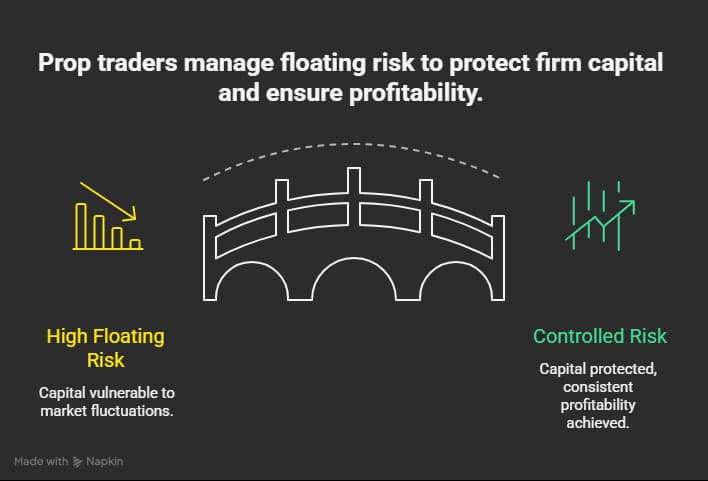
Advantages and Disadvantages of Floating Risk for Traders
An analysis of Floating Risk in prop trading shows that it can serve both as an opportunity and as a challenge for traders. Knowing its benefits and drawbacks helps traders make informed decisions.
Advantages:
- Provides traders with better awareness of market exposure, since unrealized profit or loss in open positions highlights how much capital is at risk.
- Encourages logical decision-making and emotional control, as traders learn not to act impulsively and instead use stop-losses or earlier exits.
- Helps protect both the firm’s capital and the trader’s account from severe losses by preventing large drawdowns and supporting long-term sustainability.
Disadvantages:
- Limits the ability to use high-risk or large-scale strategies, as prop firms often enforce strict thresholds on Floating Risk.
- Creates psychological pressure due to the constant need to monitor unrealized losses, sometimes leading to premature exits.
- Increases the risk of account suspension or forced trade closures if the firm’s limits are breached, especially when trading with high margin or excessive leverage.
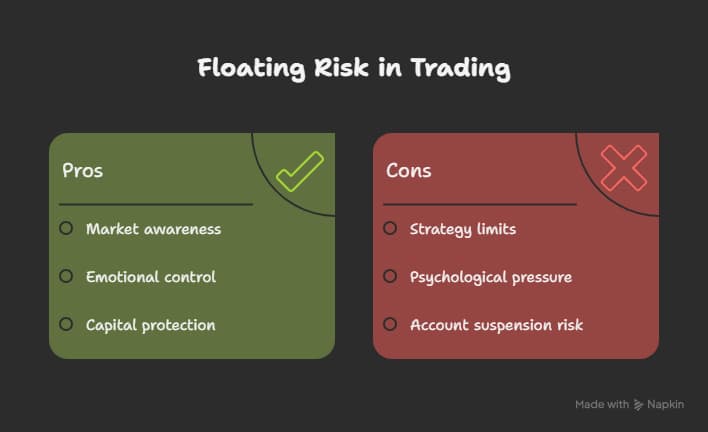

According to City Traders Imperium, different types of drawdowns, such as Balance-Based and Equity-Based, have a significant impact on the state of Floating Risk. If a firm applies the Equity-Based model, unrealized losses can put the account at risk of closure very quickly, even without closing the open trade.
Strategies for Managing Floating Risk in Prop Trading
One of the most important factors that ensures a trader’s success in funded accounts is the ability to control Floating Risk in prop trading. Prop firms expect traders to use different tools and techniques to minimize potential losses and safeguard capital. For this reason, being familiar with practical strategies in this area can both improve performance and prevent account termination.
Setting a Maximum Drawdown
A primary method of managing Floating Risk is defining a maximum allowable drawdown. Many prop firms set specific limits for overall or daily drawdowns, usually ranging between two and five percent of the account balance. Respecting this limitation ensures that unrealized losses do not exceed a level that threatens the company’s core capital. In practice, traders should structure their strategies so that the drawdown approaches the permitted level but never surpasses it.
Read More: Drawdown Calculator
Using a Trailing Stop
Another effective tool for controlling Floating Risk is the trailing stop. This allows traders to adjust the exit point as the price moves in their favor, thereby locking in part of the unrealized profit and reducing potential losses. For instance, if a stock is purchased at $100 and a trailing stop is set at $5, when the price rises to $110 the stop automatically shifts to $105. This way, even if the market reverses, a large portion of the profit is preserved and Floating Risk is reduced.
Aligning Position Size with Floating Risk
Choosing the appropriate trade size plays a crucial role in managing Floating Risk. A widely accepted guideline is the “1–2% rule,” which suggests that traders should not risk more than one to two percent of their capital on any single trade. Following this rule ensures that even if the market moves against the position, the overall account is not seriously threatened.
Furthermore, careful attention must be paid to leverage, since using high leverage combined with large position sizes can multiply Floating Risk in a very short period. Therefore, aligning position size with available capital and prevailing market conditions must always remain a priority.
Why Understanding the Rules of Foreign Brokers and Prop Firms is Essential for Iranian Traders
For Iranian traders, working with international prop trading firms comes with unique challenges that can lead to serious issues if the rules are not fully understood. Due to sanctions, banking restrictions, and payment difficulties, withdrawing profits can be extremely complicated or, in some cases, impossible.
In such circumstances, having a clear understanding of what Floating Risk is becomes even more critical, since unrealized losses in open positions may trigger a firm’s internal rules and result in forced trade closures or even account suspension. Prop firms also typically enforce strict requirements related to identity verification (KYC) and payment methods, which can be particularly complex for Iranian traders under current restrictions.
Choosing a reputable prop firm with transparent policies on profit withdrawals and reliable educational and support resources is therefore essential to reducing risks associated with international transactions. Additional factors such as whether the firm allows trading during major news events, and how account termination policies are applied in special situations, are all part of the rules that Iranian traders must carefully review before entering into any partnership.

According to Vetted Prop Firms, transparency of rules is critical when choosing a prop firm. Some firms do not clearly explain their drawdown, Floating Risk, and margin policies, or they use technical terminology that can be difficult to understand. Traders who fail to carefully review these rules may unknowingly make costly mistakes.
Capital Management Strategies for Iranian Traders under Economic Constraints
Given the unique economic conditions and financial restrictions in Iran, traders must adopt capital management strategies that can effectively mitigate risks. One effective approach is to start with demo or practice accounts. This allows traders to become familiar with market conditions and the rules of prop firms before entering real trades, while also observing how Floating Risk in prop trading can be managed in a practical environment.
Diversifying assets is another important method, as it helps balance overall exposure. If one market is affected by currency or political pressures, other assets can help stabilize the portfolio. In addition, focusing on low-risk strategies, such as short-term trades or positions in less volatile assets, can significantly reduce the chance of excessive unrealized losses.
Continuous education and seeking advice from traders with prior experience in foreign prop firms are equally crucial. Their insights can help Iranian traders better understand specific firm rules before committing capital and avoid unexpected complications that could jeopardize their accounts.
Conclusion
Understanding what Floating Risk is and how it impacts trades enables traders to make more informed decisions. The analysis shows that controlling Floating Risk in prop trading through proper tools and adherence to firm rules is essential for preserving capital and achieving consistent profitability. Traders who focus on continuous education and disciplined risk management are better positioned to pursue their professional trading journey with confidence.












